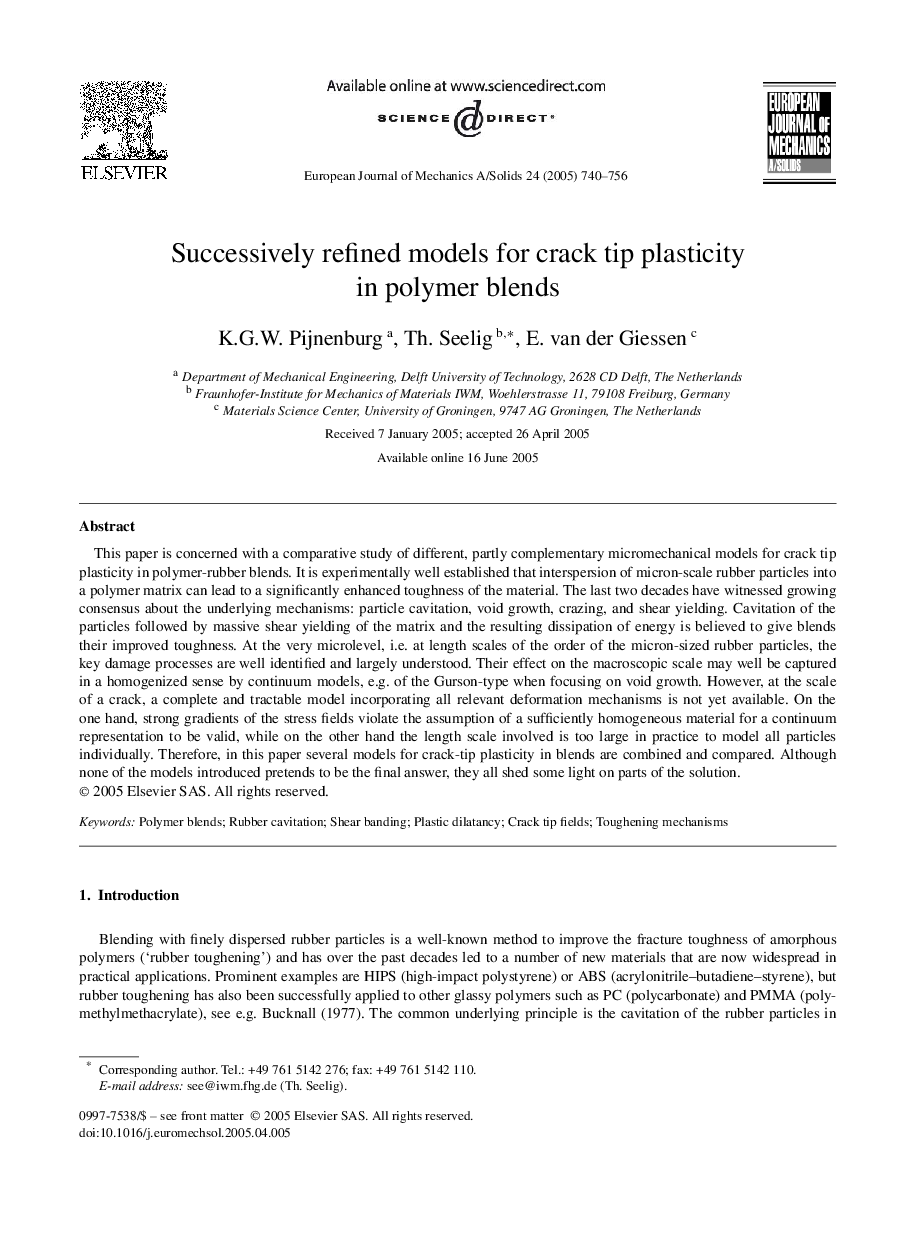| کد مقاله | کد نشریه | سال انتشار | مقاله انگلیسی | نسخه تمام متن |
|---|---|---|---|---|
| 9703064 | 1463254 | 2005 | 17 صفحه PDF | دانلود رایگان |
عنوان انگلیسی مقاله ISI
Successively refined models for crack tip plasticity in polymer blends
دانلود مقاله + سفارش ترجمه
دانلود مقاله ISI انگلیسی
رایگان برای ایرانیان
کلمات کلیدی
موضوعات مرتبط
مهندسی و علوم پایه
سایر رشته های مهندسی
مهندسی مکانیک
پیش نمایش صفحه اول مقاله

چکیده انگلیسی
This paper is concerned with a comparative study of different, partly complementary micromechanical models for crack tip plasticity in polymer-rubber blends. It is experimentally well established that interspersion of micron-scale rubber particles into a polymer matrix can lead to a significantly enhanced toughness of the material. The last two decades have witnessed growing consensus about the underlying mechanisms: particle cavitation, void growth, crazing, and shear yielding. Cavitation of the particles followed by massive shear yielding of the matrix and the resulting dissipation of energy is believed to give blends their improved toughness. At the very microlevel, i.e. at length scales of the order of the micron-sized rubber particles, the key damage processes are well identified and largely understood. Their effect on the macroscopic scale may well be captured in a homogenized sense by continuum models, e.g. of the Gurson-type when focusing on void growth. However, at the scale of a crack, a complete and tractable model incorporating all relevant deformation mechanisms is not yet available. On the one hand, strong gradients of the stress fields violate the assumption of a sufficiently homogeneous material for a continuum representation to be valid, while on the other hand the length scale involved is too large in practice to model all particles individually. Therefore, in this paper several models for crack-tip plasticity in blends are combined and compared. Although none of the models introduced pretends to be the final answer, they all shed some light on parts of the solution.
ناشر
Database: Elsevier - ScienceDirect (ساینس دایرکت)
Journal: European Journal of Mechanics - A/Solids - Volume 24, Issue 5, SeptemberâOctober 2005, Pages 740-756
Journal: European Journal of Mechanics - A/Solids - Volume 24, Issue 5, SeptemberâOctober 2005, Pages 740-756
نویسندگان
K.G.W. Pijnenburg, Th. Seelig, E. van der Giessen,